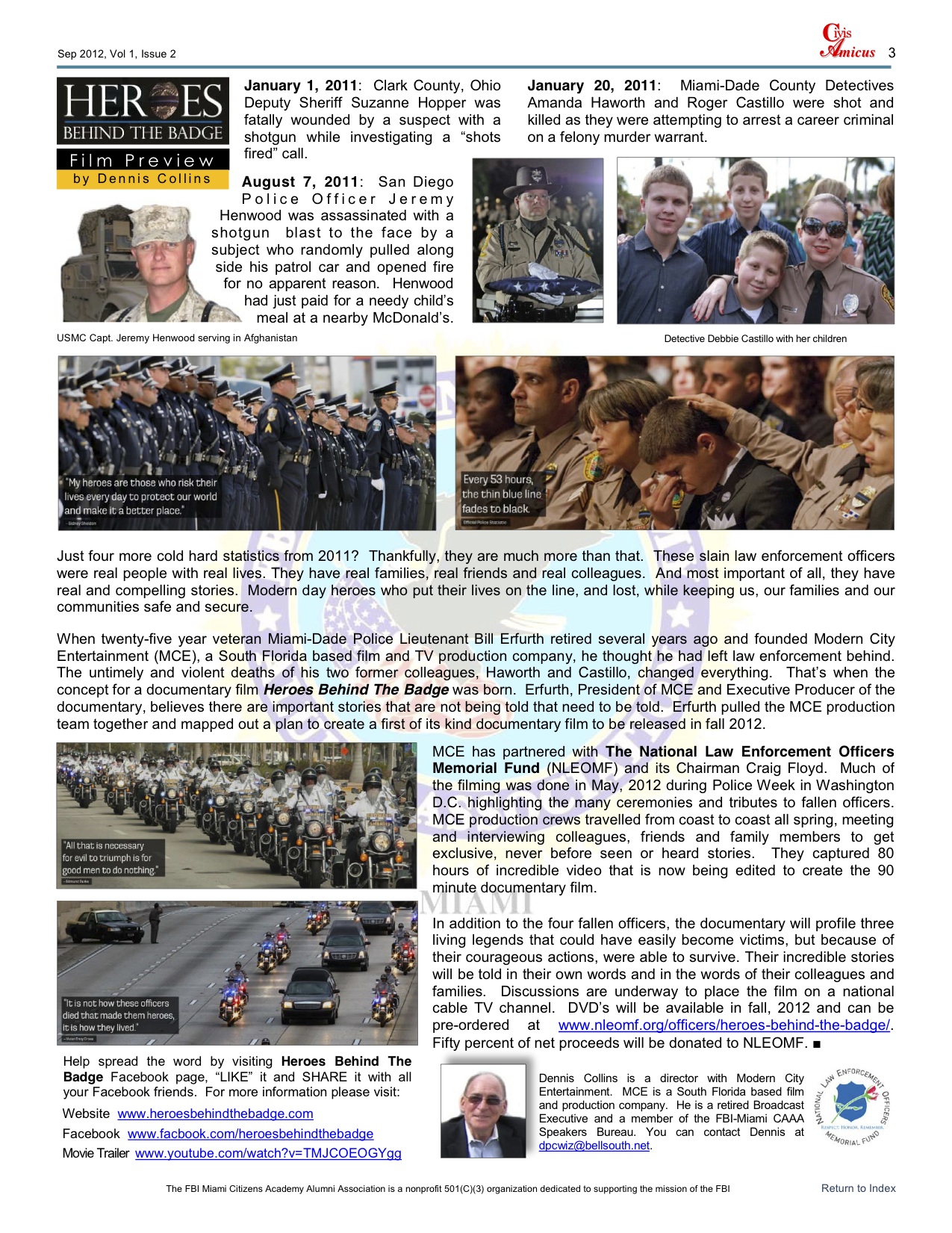 The Guelph Police Service launched its Twitter Social Media engagement platform on November 5th, 2009. Since that time, the service has amassed over 5000 followers through its two main Twitter accounts, @gpsmedia (3156) and @Chief_BLarkin (2281).
The Guelph Police Service launched its Twitter Social Media engagement platform on November 5th, 2009. Since that time, the service has amassed over 5000 followers through its two main Twitter accounts, @gpsmedia (3156) and @Chief_BLarkin (2281).
The #GPS uses Twitter as a means to:
• Engage community groups and businesses
• Promote the great “face time” work our police officers do on a daily basis
• Solicit service delivery feedback from the community and businesses
• Provide emergency messaging during serious incidents and municipal emergencies
• Create and maintain positive police-youth interactions
• Cross promote and market community partner events
In July 2011, Sergeant Doug Pflug, program creator and GPS’s Media Relations Officer, researched ways to increase followers of his Twitter account when he came across a new article discussing a “Tweet-a-Thon” conducted in Vancouver, B.C., in 2010. Vancouver Police’s Social Media Officer, Constable Anne Longley, recently explained that, “social media has been a very successful way for us to interact with the community that we weren’t able to before. It is interactive. It is not just a way for us to push out a message” (Nguyen, 2012). The Guelph Police Service has since held three Twitter campaigns, offering on-line followers a glimpse of what occurs during a police officer’s typical 10-hour shift.
Tweet-a-Thon – Throughout the past year, the #GPS hosted three Tweet-a-Thons during high call-volume time frames, specifically the annual 2011 Project Safe Semester kick-off and 2011 Project Safe Semester wrap-up and the 2012 St. Patrick’s Day celebrations. During these three ten-hour Tweet-a-Thons, Media Relations Officer Pflug tweeted general information about each call for service dispatched to his fellow officers. Most of the complaints concerned public intoxication, noise ordinances, disturbances, and trespassing. “We wanted to give the public real insight into the types of calls we respond to,” explains Sgt. Pflug. “We wanted followers to appreciate how engaged we are while balancing the public’s rights to privacy and other pertinent legislative requirements.” During the Project Safe Semester #PSS2011 campaign, Sgt. Pflug tweeted 164 times and responded to 44 direct messages for the kick-off and he tweeted 108 times and replied to 43 direct messages for the wrap-up.
When the Tweet-a-Thon began, Sergeant Pflug provided followers a basic outline of the geographical locations and boundaries within the City of Guelph:
“@gpsmedia #pss2011 call location info: N-4 =downtown, N-3 =entire city south of Wellington, N-1 =west side N-2 is east side both split at Woolwich St”
The tweeted locations remained vague. “We didn’t want people following us around or showing up to potentially dangerous situations, so the information in the tweets will be restricted to neighbourhoods rather than exact locations.” said Sgt. Pflug.
The Tweet-a-Thon Pflug’s frequent tweets highlighted the variety of calls dispatched to officers, hourly cell and prisoner checks, arrests, offences committed, tickets issued for public intoxication, urination, and other offences. At the end of the evening, Sergeant Pflug tweeted:
“@gpsmedia EVENING WRAP UP 3:55 am – 193 calls, 12 males, 2 females and 1 youth in custody at GPS HQ @Deputy_BLarkin #pss2011 Thanks for the follows!!”
Following the Tweet-a-Thon, Sgt. Pflug reviewed the results, including several messages from followers and tweet statistics. The Tweet-a-Thon was deemed to be a success. “This new approach provided a great opportunity to engage the social media community and incited several positive and supportive comments.” Below are just a few examples of the positive responses from members of the community:
@SociableGuelph: Fantastic work @GPSmedia @Deputy_BLarkin for tweet-a-thon #pss2011. Amazing work you do for #Guelph – fascinating to follow just one night
@joey_lotion: tweetathon rly showed the high demand on GPS. Thx for making it happen! Hopefully repeated in the future. @gpsmedia @Deputy_BLarkin #pss2011
@karenjconnelly: @gpsmedia Thanks for keeping Guelph safe while the rest of us sleeps! Never forget that you’re our everyday heroes. #pss2011
Sgt. Pflug conducted a supplemental search to determine the potential re-tweet impact from other Twitter members following this real-time event. A “re-tweet” is the re-posting of someone else’s tweet, distinguished by a specific re-tweet icon. Pflug tweeted a serious disturbance call and within a short time, the message was re-tweeted to 21,795 Twitter accounts.
“It’s astonishing that one 140-character message can appear on over 21,795 hand-held devices, tablets, laptops, etc. in just a few moments,” commented Sgt. Pflug. “We credit Twitter messaging and re-tweets for assisting us in locating a missing elderly male in December 2010. His vehicle plate number was tweeted, picked-up by media and broadcasted. A short time later, a radio listener saw his vehicle beside a rural corn field. Police were called and the elderly male was located in a disoriented state. We believe that had he not been found so quickly, he may have easily succumbed to the weather and perished.”
Since this time, the police services in Sarnia and Chatham-Kent have conducted similar law enforcement Tweet-a-Thons, mirroring the successes achieved by their predecessors. Approximately 30 percent of police forces currently have Twitter accounts. “It is yet another tool used to reach out to the community, display transparency, and at the same time, help us do our job.” Said Sgt. Pflug.
Although still in its early stages throughout North America, the concept of social media in law enforcement has proven to be a very good community engagement tool. The Guelph Police Service further utilized Twitter as an information-sharing tool last summer after a large gas leak in a residential neighbourhood, resulting in a near citywide power outage. “Once we confirmed the power was out, we immediately began tweeting messages to followers advising them of the outage and asking they to provide their location and whether or not they were experiencing any interruptions. When your power goes out, so does your phone, TV, computer and radio.
Once the power was restored, many followers expressed their gratitude as everyone seems to have a hand-held device and our tweets kept them up to date in a time of crisis. As a result, we are currently investigating the formal application of Twitter during municipal emergencies as part of the City of Guelph’s Emergency Management Strategy.” said Sgt. Pflug.
Little academic literature exists to effectively measure the impact of social media on policing. However, the emerging benefits has led most police personnel to believe this is not a fad but rather a fixture for police services to efficiently engage the community in times of crisis and buttress positive police-community interactions.
-Sgt. Douglas Pflug has been the Media Relations Officer for the Guelph Police Service since June 2008. He is the Vice-Chair of the Ontario Media Resource Officers Network. He has lectured in Canada and the United States on the benefits a comprehensive social media platform can provide your police service. If you wish further information or assistance with your “Tweet-a-Thon”, please contact (519) 831-9285, @gpsmedia, douglas.pflug@police.guelp.on.ca or www.facebook.com/gpsmedia.References:
Nguyen, Linda. “Follow That Force: Cops Take to Twitter”. The Canadian Press. 30 Jun 2012. msnnews. Web. 11 Aug 2012.












